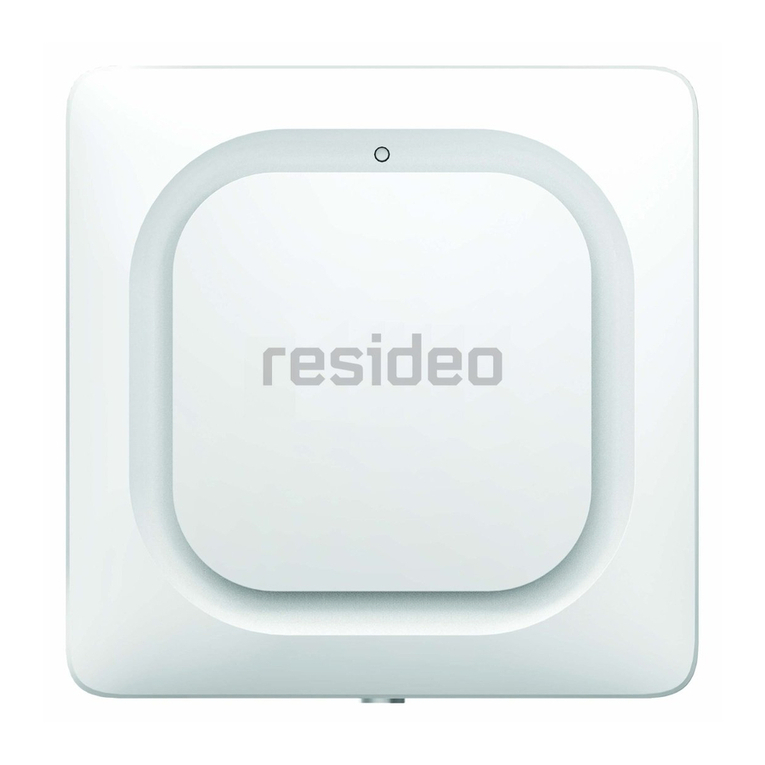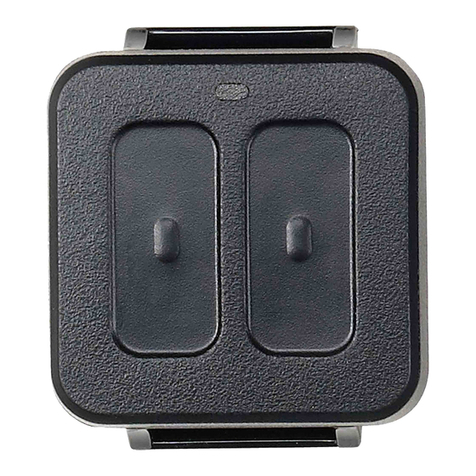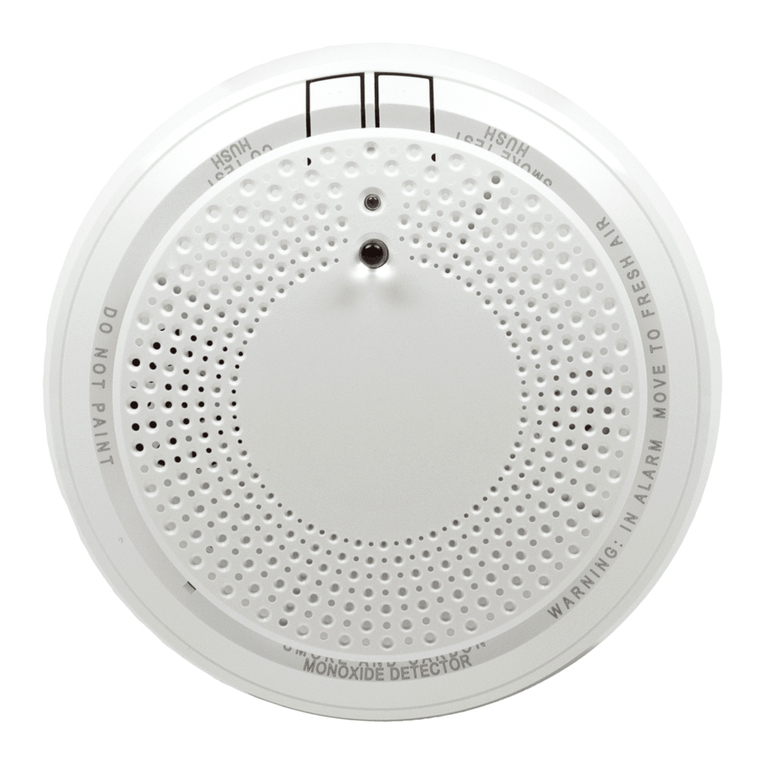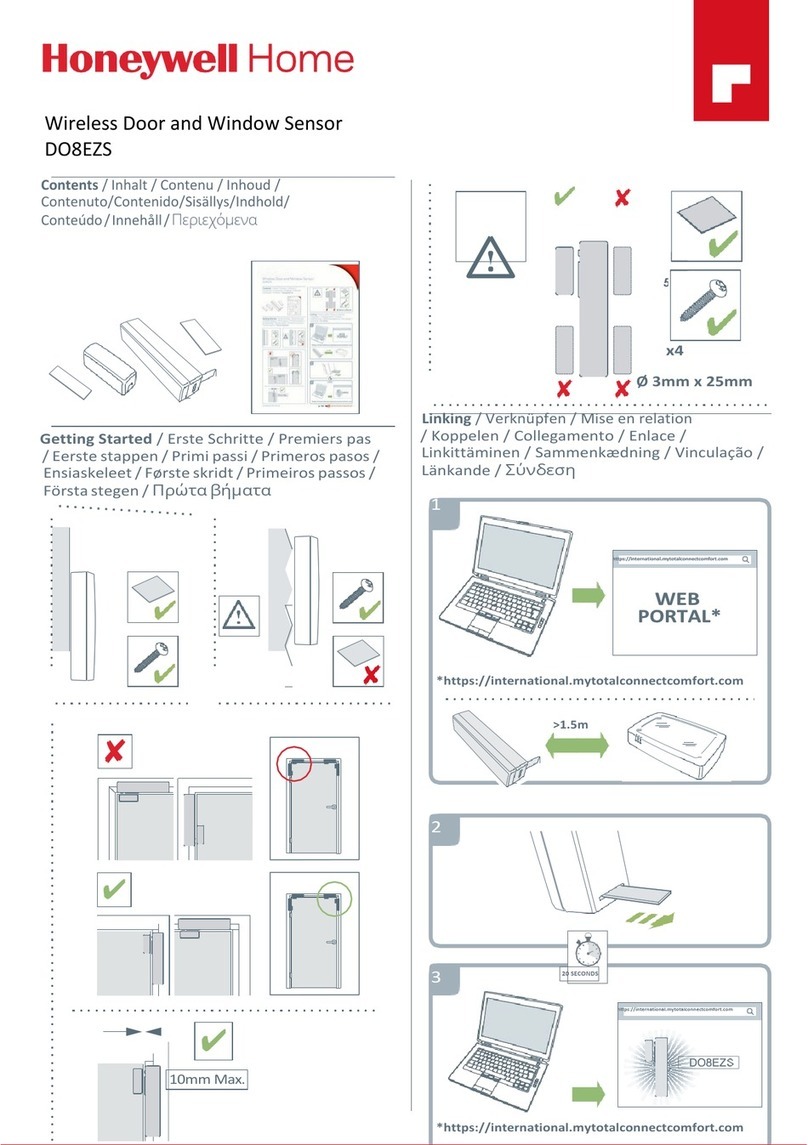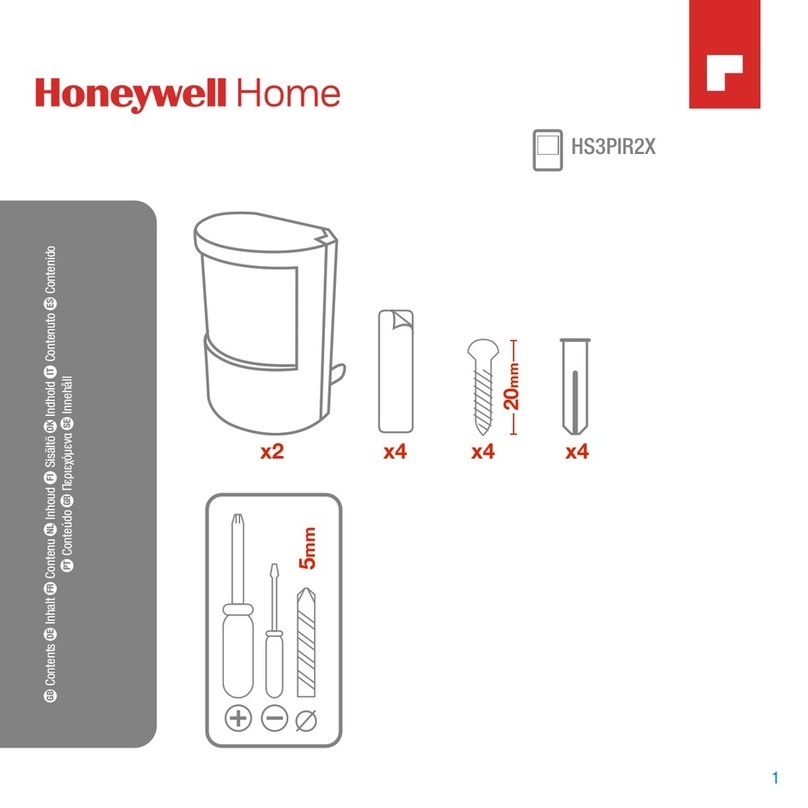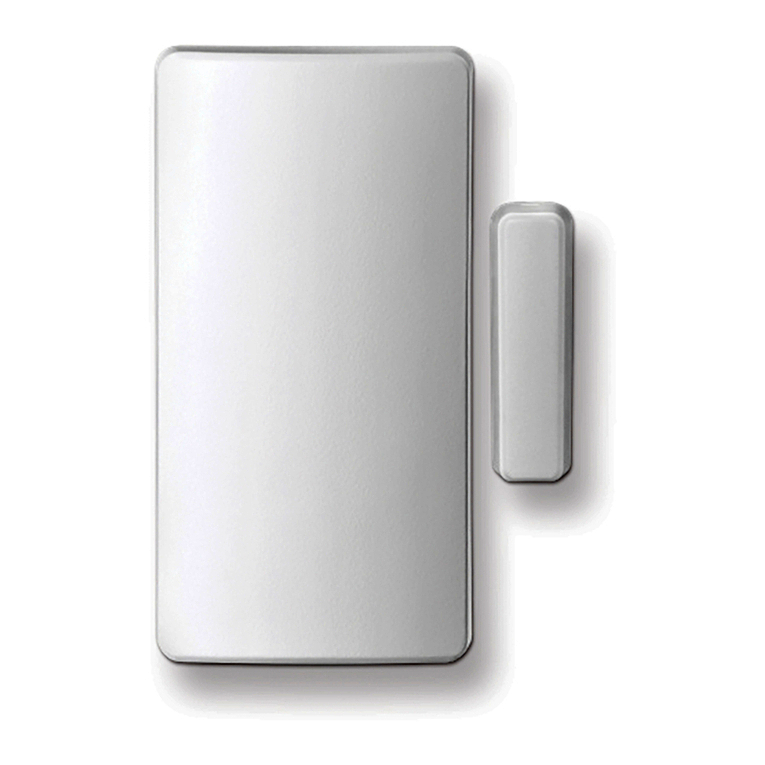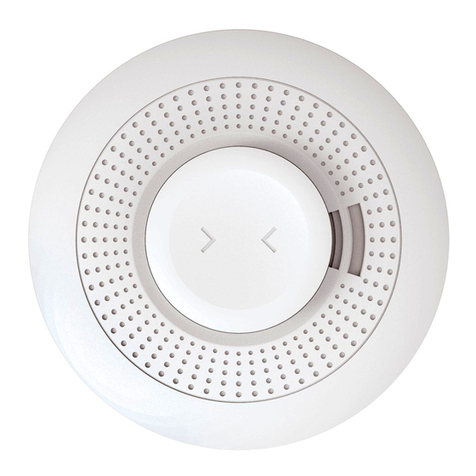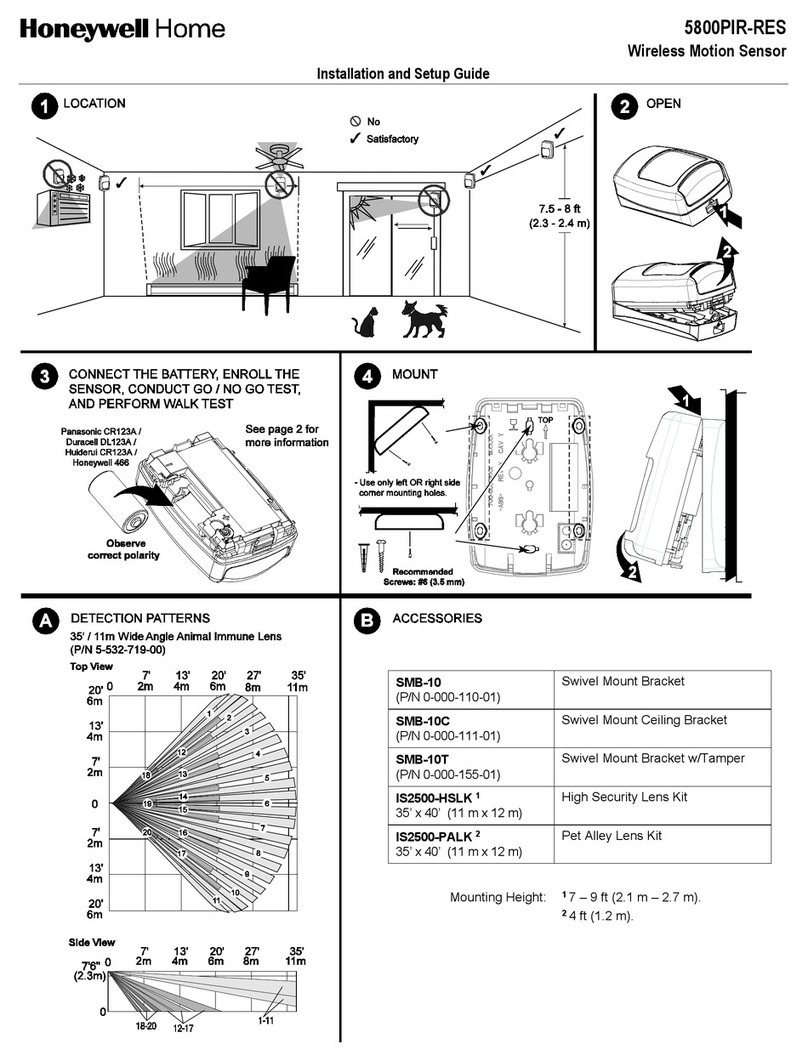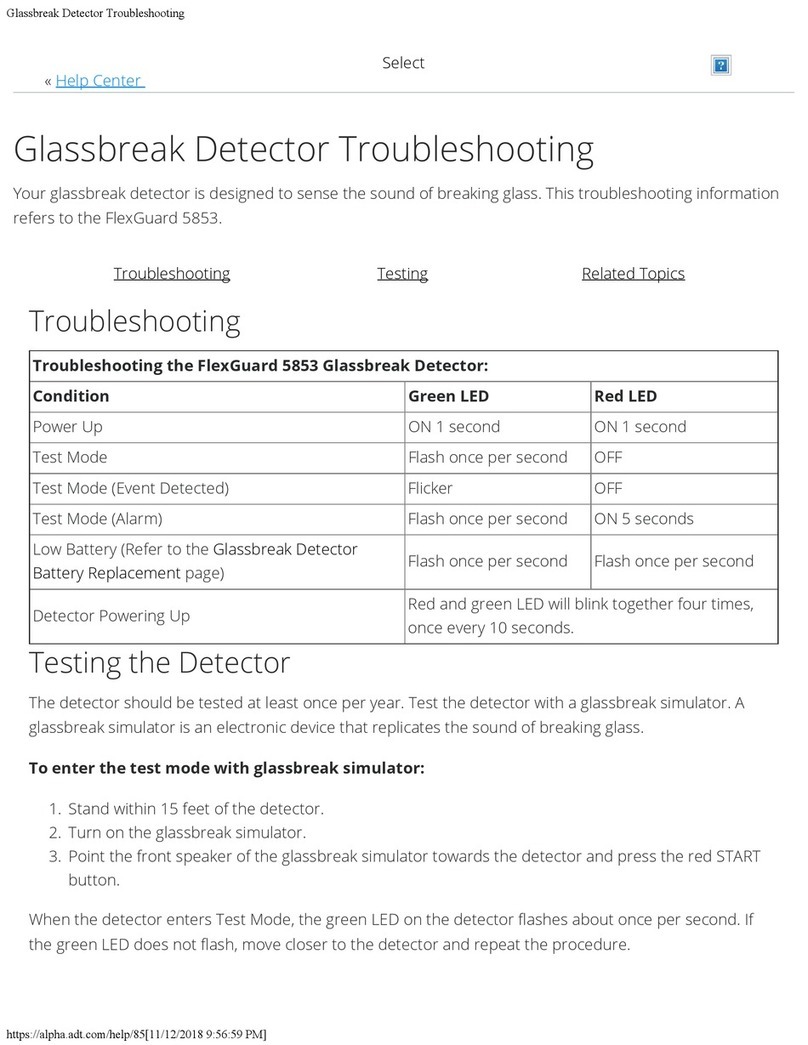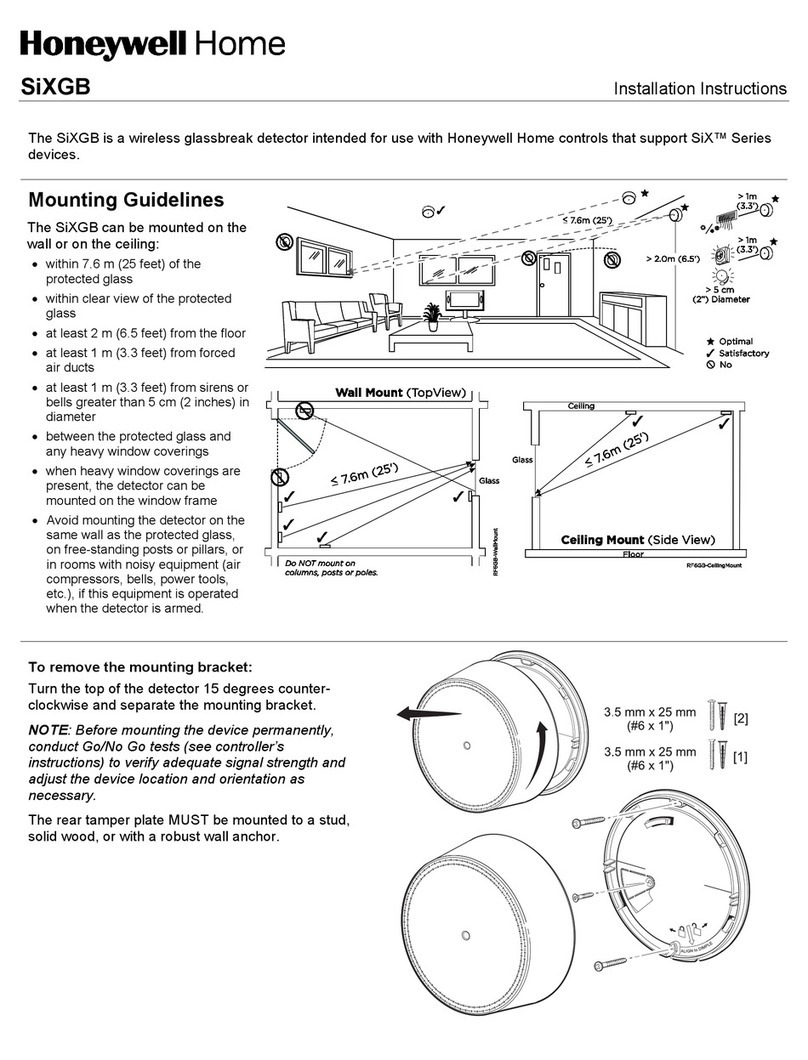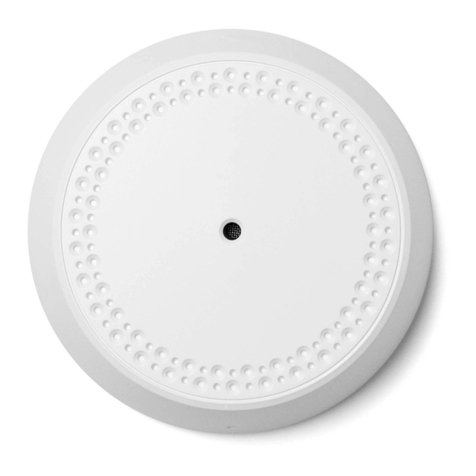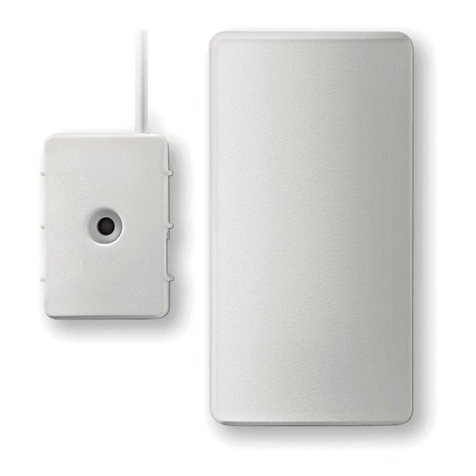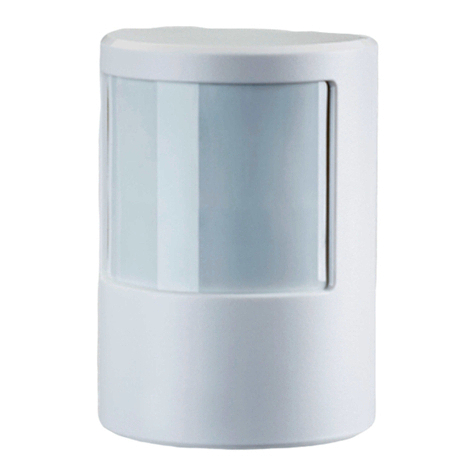
6
Per UL standard 2075, the PROSiXCOCN detector has been tested to the sensitivity limits defined in UL standard 2034.
CO Alarm Thresholds
Detector Response Time (Minutes)
REFER TO THE INSTALLATION INSTRUCTIONS FOR THE CONTROL WITH WHICH THIS DEVICE IS USED, FOR
DETAILS REGARDING LIMITATIONS OF THE ENTIRE ALARM SYSTEM.
See Resideo Quick Installation Guide (P/N I56-0620-000 (www.resideo.com) and The Limitations of Carbon Monoxide Detectors
(P/N K14670V1 4/08 REV B).
LIMITED LIFE OF CO SENSOR
This detector is manufactured with a long-life electrochemical
carbon monoxide sensor. Over time the sensor will lose
sensitivity and will need to be replaced. The life span of the CO
sensor is approximately ten years from the date of manufacture.
Periodically check the detector’s replacement date. Remove the
detector head and refer to the ‘replace by’ sticker placed on the
underneath side of the detector. The sticker will indicate the date
the detector should be replaced.
Reminder:
This detector is also equipped with a feature that will signal the
panel once the CO sensor has passed the end of its’ u
this occurs, it is time to replace the detector.
What to do if the detector goes into CO alarm:
If the detector goes into CO alarm (4 beeps), immediately move
to a spot where fresh air is available, preferably outdoors, where
the air is safe and call your security service provider. Tell your
provider the detector alarm status, and that you require
professional assistance in ridding your home of the carbon
monoxide.
WARNING!
Activation of this device indicates the presence of
carbon monoxide (CO) which can KILL YOU.
This detector is NOT:
•A substitute for the proper servicing of fuel-burning
appliances or the sweeping of chimneys.
•To be used on an intermittent basis or as a portable alarm for
the spillage of combustion products from fuel-burning
appliances or chimneys.
Carbon monoxide gas is a highly poisonous gas which is released when fuels are burnt. It is invisible, has no smell and is
therefore is impossible to detect with the human senses. Under normal conditions in a room where fuel burning appliances
are well maintained and correctly ventilated, the amount of carbon monoxide released into the room by appliances should
not be dangerous.
SYMPTOMS OF CARBON MONOXIDE POISONING
Carbon monoxide bonds to the hemoglobin in the blood and reduces the amount of oxygen being circulated in the body. The
following symptoms are examples taken from NFPA 720; they represent approximate values for healthy adults.
Many cases of reported carbon monoxide poisoning indicate that while victims are aware that they do not feel well, they become
so disoriented that they are unable to save themselves by either exiting the building or calling for assistance. Also, young children,
elderly and pets may be the first to be affected. This should be discussed with ALL members of the household.
Mild Exposure Headaches, running nose, sore eyes, often described as ‘flu’ like symptoms
Medium Exposure Dizziness, drowsiness, vomiting
Extreme Exposure Unconsciousness, brain damage, death
CAUTIONS
•This device will only indicate the presence of carbon monoxide gas at the sensor. Carbon monoxide gas may be present in
other areas;
•This device is designed to protect individuals from the acute effects of carbon monoxide exposure. It will not fully safeguard
individuals with specific medical conditions. If in doubt consult a medical practitioner.
•Installation of the device should not be used as a substitute for proper installation, use, and maintenance of fuel-burning
appliances, including appropriate ventilation and exhaust systems.
•This carbon monoxide alarmin device is designed to detect carbon monoxide gas from any source of combustion. It is NOT to
detect smoke, fire or other gases.
